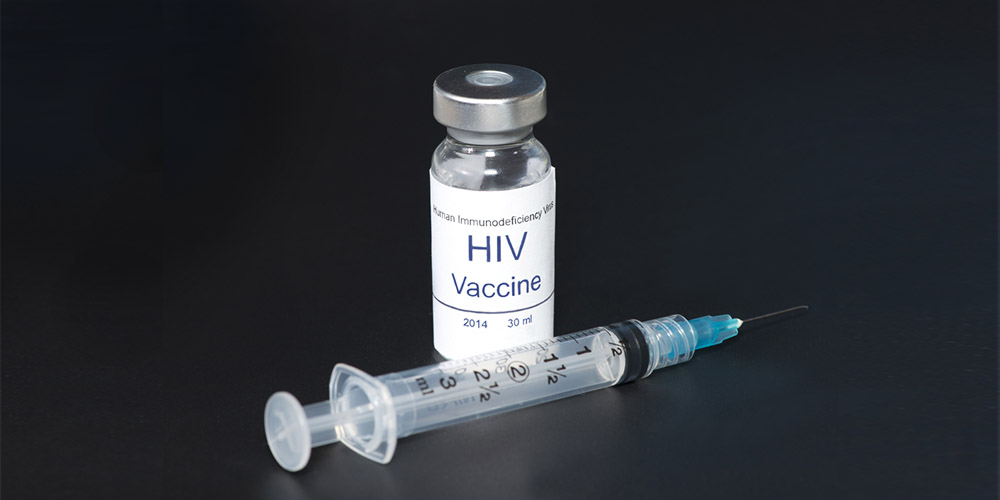

HIV Vaccine Target Found to Be Alpha-Helical by NMR
A recent study used nuclear magnetic resonance (NMR) spectroscopy to determine the 3D structure of a peptide known to be targeted by antibodies generated by HIV vaccination. The authors report a dynamic alpha-helical structure that may underlie the protective effect of the HIV vaccine.
While recent advances in retroviral therapy have drastically improved the longevity of those with HIV, a vaccination to eliminate the spread of the virus remains an exciting possibility. To date, the only HIV vaccine to have demonstrated efficacy in a phase 3 trial is RV144, which used a heterologous prime-boost to achieve 60% efficacy 1 year after vaccination.
Lead author Dr. Mohammed Aiyegbo and colleagues at New York University published their paper entitled, “Peptide Targeted by Human Antibodies Associated with HIV Vaccine-Associated Protection Assumes a Dynamic α-Helical Structure” in the journal PLOS ONE on January 20, 2017. The authors sought to determine the structural characteristics of a peptide targeted by the antibodies generated during HIV vaccination with RV144.
This peptide contains 23 amino acids, with the same sequence as a segment in the second variable (V2) loop of the MN strain of HIV. Higher titers of antibodies against this peptide were found to be associated with reduced risk of HIV infection in a phase 3 study of RV144.
In order to better understand its role in the protective effect of RV144, the authors performed nuclear magnetic resonance (NMR) using a Bruker AVANCE II spectrometer to determine the 3D structure of this peptide. By employing an ab initio protein folding algorithm, the authors were able to determine a series of energetically favorable conformations for the peptide.
After including further restraints to the algorithm based upon the NMR data, the authors found that the peptide has a distorted and flexible alpha-helical structure in solution. A control experiment using a set of NMR restraints from another segment of the HIV sequence caused a loss of this alpha-helix, lending confidence to the observed result.
To go one step further, the researchers determined if similar structural conformations were seen in the V2 regions (amino acids 165-181) of other circulating HIV strains. Indeed, they found that all strains tested adopt a helical structure, with most forming flexible alpha-helices. “Interestingly, the equivalent segment from the SIVmac251 strain, which is frequently used in preclinical animal model studies of HIV infection, models closely with the MN strain,” the authors state.
To confirm these results, the authors created 5810 homology models of the V2 variants using previously published crystallography data and found that nearly all (>95%) of the variants preferred an alpha-helical conformation. Conserved amino acids in this segment of the HIV sequence were found to be clustered on one side of the observed alpha-helix.
“This finding provides a structural basis for hypothesizing that the epitope targeted by the MN-specific, RV144-vaccine-elicited, protection-associated Abs is conserved across circulating HIV strains,” the authors conclude. The authors posit that the alpha-helical structure may correlate with the protective effects of the RV144 treatment, and that this information may be useful in aiding the design of more effective HIV vaccines.
References
- Aiyegbo, Mohammed S., Evgeny Shmelkov, Lorenzo Dominguez, Michael Goger, Shibani Battacharya, Allan C. Decamp, Peter B. Gilbert, Phillip W. Berman, and Timothy Cardozo. “Peptide Targeted by Human Antibodies Associated with HIV Vaccine-Associated Protection Assumes a Dynamic α-Helical Structure.” Plos One 12.1 (2017)
- Rerks-Ngarm S, Pitisuttithum P, Nitayaphan S, Kaewkungwal J, Chiu J, Paris R, et al. Vaccination with ALVAC and AIDSVAX to prevent HIV-1 infection in Thailand. NEngl J Med. 2009; 361(23):2209–20.
- Zolla-Pazner S, deCamp AC, Cardozo T, Karasavvas N, Gottardo R, Williams C, et al. Analysis of V2 antibody responses induced in vaccinees in the ALVAC/AIDSVAX HIV-1 vaccine efficacy trial. PLoS One. 2013; 8(1).


